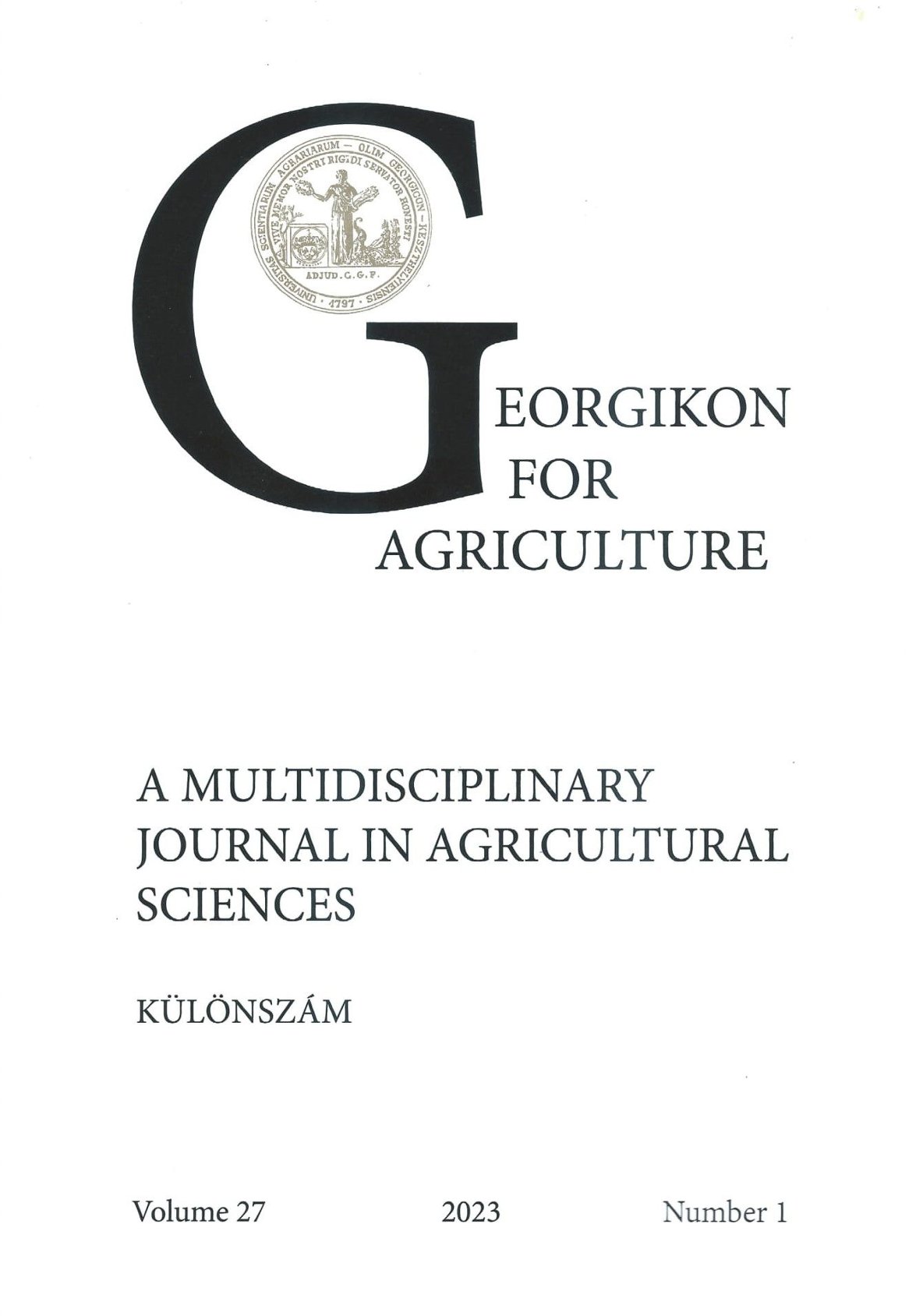Posztharveszt fungicidek kioldódásának vizsgálata italokban és levekben
Keywords:
postharvest fungicides, lemon, food safetyAbstract
Increasing the shelf life of fruit is a challenge for food professionals. Postharvest fungicides are used to protect fruit health against fungal infections. In the case of lemons, the two most frequently used active ingredients are imazalil and thiabendazole, which are the active ingredients of formulations that bind well to the waxy layer of the fruit's skin are, therefore, difficult to remove. Unfortunately, consumers often ignore this information and forget that these harmful compounds can be transferred into our food. In this paper, amount of the active substances leached from the peel of lemons during beverage extraction was investigated. Four drinks/juices were used for the measurements, and factors responsible for the difference in leaching were also studied. For this purpose, the physico-chemical properties of the two active ingredients and the composition of the drinks were investigated. A self-developed residue analysis method was used to measure the exact concentrations of the active substances.
The results show that during the flavouring of drinks, a measurable amount of harmful active substances can be released from the peel of lemons, so the use of lemons in this way is risky from a food safety point of view.
References
Ismail, M. and Zhang, J. 2004. Post-harvest Citrus Diseases and their control. Outlooks on Pest Management 15(1). 29-35.
EU Pesticide Database. https://food.ec.europa.eu/plants/pesticides/eu-pesticides-database_en
Rejczak, T. and Tuzimski, T. 2015. A review of recent developments and trend sin the QuEChERS sample preparition approach. Open Chemistry 13(1). 980-1010.
Dias, J. V., Nunes, M. G. P., Pizzutti, I. R., Reichart, B., Jung, A. A. and Cardoso, C. D. 2019. Simultaneous determination of pesticides and mycotoxins in wine by direct injection and liquid chromatography-tandem mass spectrometry analysis. Food Chemistry 29(1). 83-91.
Kruve, A. and Leito, I. 2013. Comparison of different methods aiming to account for/overcome matrix effects in LC/ESI/MS on the example of pesticide analyses. Analytical Methods 5(12). 3035-3044.
Pelegrín, C. J., Flores, Y., Jiménez, A. and Garrígos, M. C. 2020. Recent trends in the analysis of chemical contaminants in beverages. MDPI 32(6). 1-29.
Cheng, Y., Lin, Y., Cao, H. and Li, Z. 2020. Citrus postharvest green mold: recent advances in fungal pathogenicity and fruit resistance. Microorganisms 8(3). 449.
/2011/EU rendelet: https://eurlex.europa.eu/legalcontent/HU/TXT/PDF/-?uri=CELEX:32011R1169
Downloads
Published
Issue
Section
License
Copyright (c) 2023 Ivacs Vince, Sörös Csilla

This work is licensed under a Creative Commons Attribution-NonCommercial-NoDerivatives 4.0 International License.
Cikkre a Creative Commons 4.0 standard licenc alábbi típusa vonatkozik: CC-BY-NC-ND-4.0. Ennek értelmében a mű szabadon másolható, terjeszthető, bemutatható és előadható, azonban nem használható fel kereskedelmi célokra (NC), továbbá nem módosítható és nem készíthető belőle átdolgozás, származékos mű (ND). A licenc alapján a szerző vagy a jogosult által meghatározott módon fel kell tüntetni a szerző nevét és a szerzői mű címét (BY).




